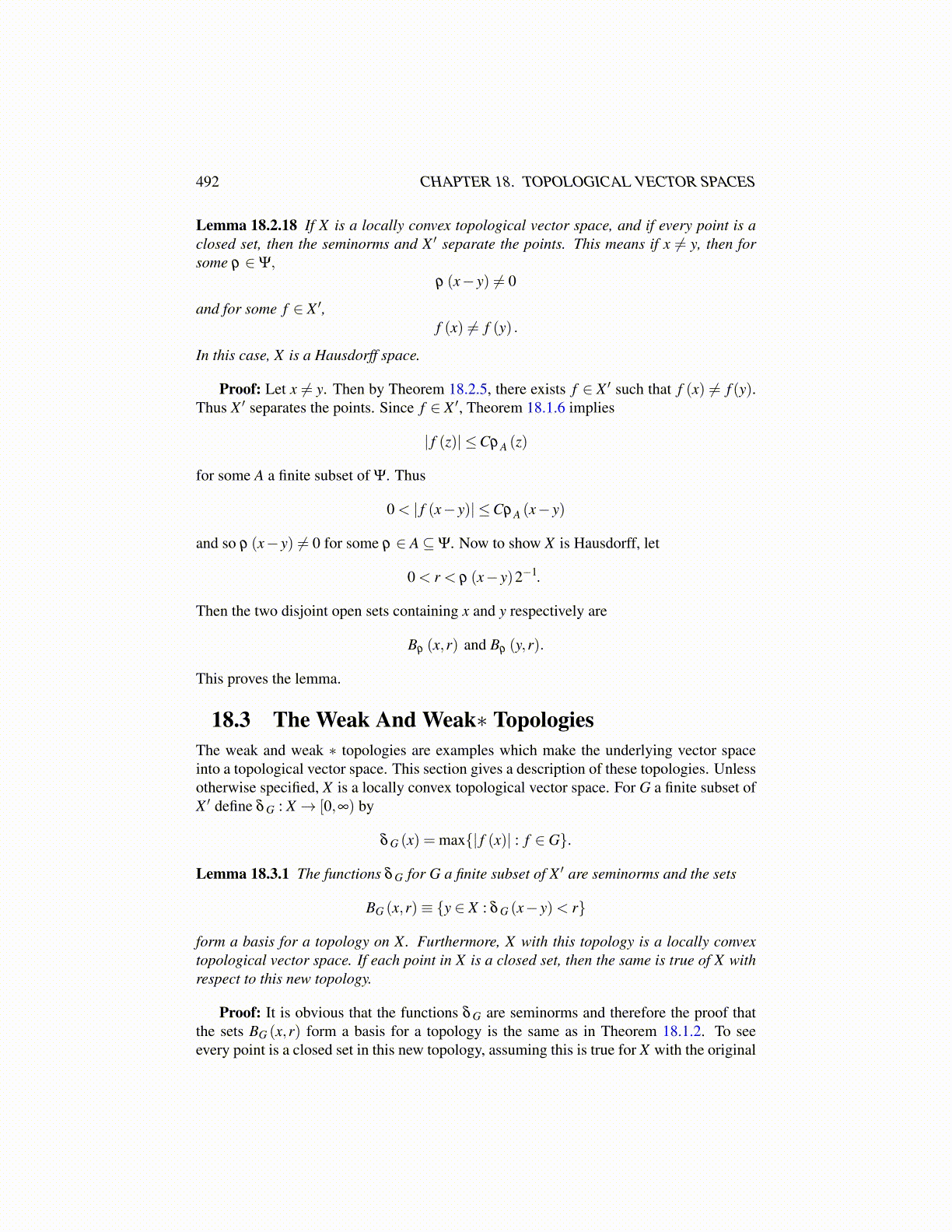
492 CHAPTER 18. TOPOLOGICAL VECTOR SPACES
Lemma 18.2.18 If X is a locally convex topological vector space, and if every point is aclosed set, then the seminorms and X ′ separate the points. This means if x ̸= y, then forsome ρ ∈Ψ,
ρ (x− y) ̸= 0
and for some f ∈ X ′,f (x) ̸= f (y) .
In this case, X is a Hausdorff space.
Proof: Let x ̸= y. Then by Theorem 18.2.5, there exists f ∈ X ′ such that f (x) ̸= f (y).Thus X ′ separates the points. Since f ∈ X ′, Theorem 18.1.6 implies
| f (z)| ≤CρA (z)
for some A a finite subset of Ψ. Thus
0 < | f (x− y)| ≤CρA (x− y)
and so ρ (x− y) ̸= 0 for some ρ ∈ A⊆Ψ. Now to show X is Hausdorff, let
0 < r < ρ (x− y)2−1.
Then the two disjoint open sets containing x and y respectively are
Bρ (x,r) and Bρ (y,r).
This proves the lemma.
18.3 The Weak And Weak∗ TopologiesThe weak and weak ∗ topologies are examples which make the underlying vector spaceinto a topological vector space. This section gives a description of these topologies. Unlessotherwise specified, X is a locally convex topological vector space. For G a finite subset ofX ′ define δ G : X → [0,∞) by
δ G (x) = max{| f (x)| : f ∈ G}.
Lemma 18.3.1 The functions δ G for G a finite subset of X ′ are seminorms and the sets
BG (x,r)≡ {y ∈ X : δ G (x− y)< r}
form a basis for a topology on X. Furthermore, X with this topology is a locally convextopological vector space. If each point in X is a closed set, then the same is true of X withrespect to this new topology.
Proof: It is obvious that the functions δ G are seminorms and therefore the proof thatthe sets BG (x,r) form a basis for a topology is the same as in Theorem 18.1.2. To seeevery point is a closed set in this new topology, assuming this is true for X with the original